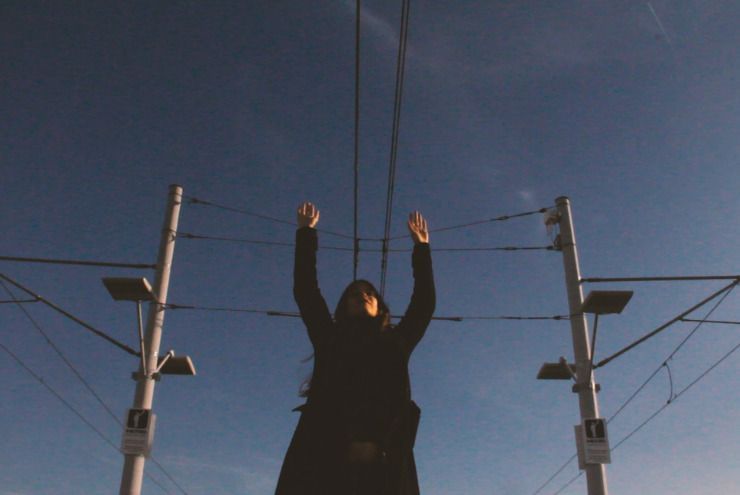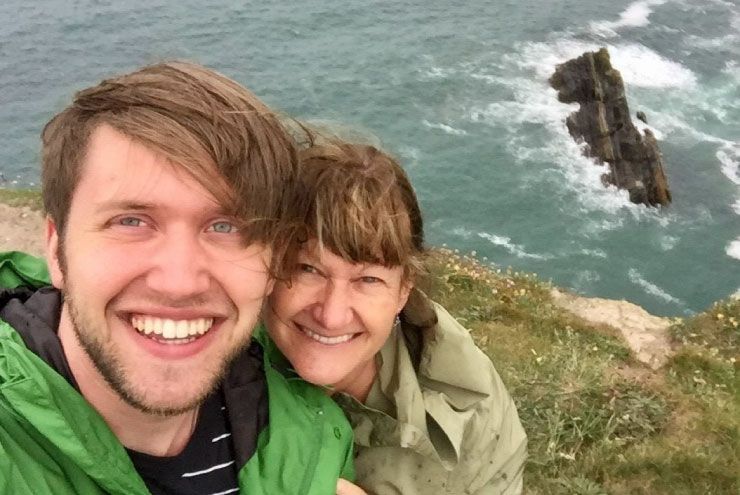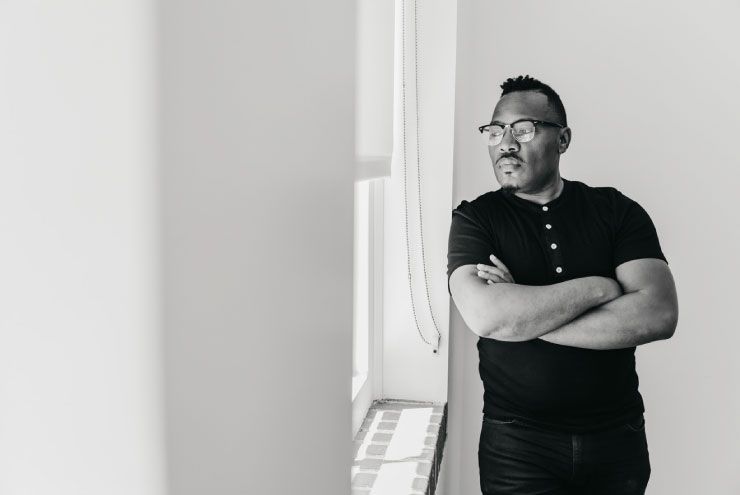By Addie Tsai
I first came to know of T Lavois Thiebaud—and became immediately obsessed—upon discovering their collaboration with musical duo Merel & Tony for the video Matroesjkpop. So I was delighted to learn about their new collaboration, ALMOST PERFECT WORLD, a musical film “rendered righteously imperfect” and meant as a New Year’s offering for 2023. This new film is whimsical, melancholic, wild, thoughtful, frenzied, and contemplative, which is also the perfect way to describe this magical collaboration. ALMOST PERFECT WORLD was conceptualized and filmed three years ago, just before COVID grabbed hold of the world and changed our understanding of life as we know it.
A cross between a music video and a short film, ALMOST PERFECT WORLD is the third collaboration between Merel & Tony and T Lavois Thiebaud—they worked previously on Pain Killers and Matroesjkapop. The spoken poetry of the film, written and arranged by Thiebaud, is composed almost exclusively from the language of the song lyrics. The film infuses live-action performance with handcrafted, stop-motion animation and features the otherworldly light boxes of Houston-based painter Stephanie Gonzalez. The piece was filmed against the landscape of downtown Houston, on and along the Main Street Metro Line, in the interior and exterior of the now defunct, east-end DIY venue and artist home, The Lombardy House, and at Gonzalez’s Deerslug Studio.
The artists behind this unique film were generous enough to talk with me about the history behind their collaboration and their process of bringing ALMOST PERFECT WORLD to life.
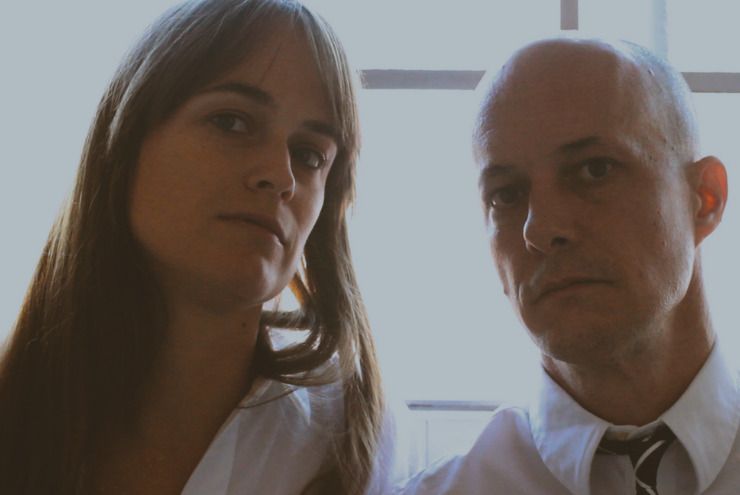
Addie Tsai: Tell me a little bit about how your collaboration began, and the process behind your collaborations.
T Lavois Thiebaud: I was first introduced to Merel & Tony’s music in 2016, and I fell in love. Tony and I met while working on an immersive theater piece called Red House (2017) that I co-created. Tony was the musical director. Later that year, he asked me to write a New Year’s Eve rock opera with him: Traci and Tony’s Unusual New Year’s Eve, or, as we like to call it, The Cyndi L’Opera, as Tony was inspired by the 1984 MTV New Year’s Eve Special starring Cyndi Lauper and featuring the full She’s So Unusual album. I transcribed the entire special and then chopped and rearranged the language into a poetic story with characters and a live band (including Merel & Tony bandmates Chris Bakos and Cathy Power). At the time, we said this was a show for the people who were always disappointed by New Year’s Eve. I think there’s a similar whimsy-meets-melancholy in ALMOST PERFECT WORLD. That’s a bit of the gift—reflecting back to folks who relate to NYE blues: that kind of loneliness or disappointment, while also providing some beauty and connection and hope.
Since 2017 Merel & Tony have been some of my most consistent and cherished collaborators.
Tell me about ALMOST PERFECT WORLD.
Tony: Merel and I both come from theater, and we’re used to working collaboratively. So much so that it’s sometimes hard to say exactly how a song came about or who wrote what. So we came up with the words and melody for this one, but then our band really shaped the music. We tend to draw in all the good people we can on a project, and let them shine doing what they do best. Like Merel’s Italian horn player collaborator, who solos at the end. T is someone we’ve worked with on film and theater. We love the way their brain works, and we’re always happy to let them follow their own path on our collaborations.
T understands and underscores the lyrical themes of the song. It can be hard to be a decent citizen of the world (however you interpret that), and it can feel lonely. I think T’s film frames us as lonely people struggling with that.
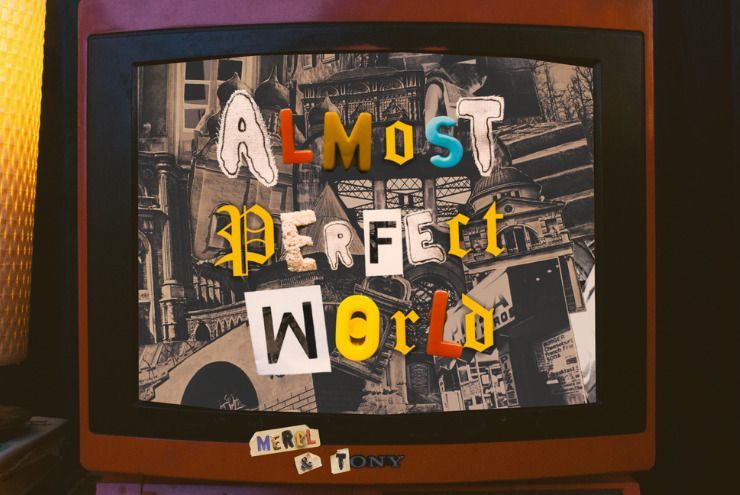
Merel: This lyric was written when we decided to make a concept album called Protest Psalms, a record (after some records about feelings and relationships) in which we tried to address the state of the world, our place in it. And while working on that, we noticed what a complicated thing that was to do, also considering our position of privilege. In an email exchange from December 2014 containing the first version of the lyrics, Tony wrote to me describing ALMOST PERFECT WORLD: “a song about the things we’ve been thinking about. and especially about white people. or else it’s a song about how difficult it is to write protest songs. or else it’s about both those things.”
TLT: It’s about the world never getting it quite right, where we are to blame for this truth, and the tenderness and delicacy necessary to continue loving one another toward a more “perfect” reality.
How were all the elements assembled/created together, in terms of poetry, video, music, and artwork? How did Stephanie get brought on board, and how did that part of the collaboration unfold? Did you use paintings that already existed, or were they created for the film based on your collective direction?
TLT: Typically, Merel and Tony approach me with a track and let me run wild. I create a written storyboard of the concept and present it to them. Sometimes they have an adjustment or a new thought but most of our collaboration, as Merel pointed out in an email exchange, is purely reactive: me reacting to the song, their performance a reaction to my concept/direction. There’s an unspoken ease to our creative dialogue in which I feel extremely well-met. Our collaboration is unusually natural. This was my first time getting to direct and film Merel. I was really taken with her performance. When we were filming the newscaster character on the greenscreen, Merel knocked out this incredible one-take—which is actually quite difficult to do in a music video setting—performing a character while singing one with a backing track for the entire length of the song without breaking—the effect is quite powerful. That’s the footage I ended up using for the video.
M: Regarding the acting, honestly, I just feel that the mutual respect and trust are so strong that it costs no effort to simply drop oneself into the work with an open heart. I’m mainly a very reactive kind of person—in this case to your script, ideas, and presence.
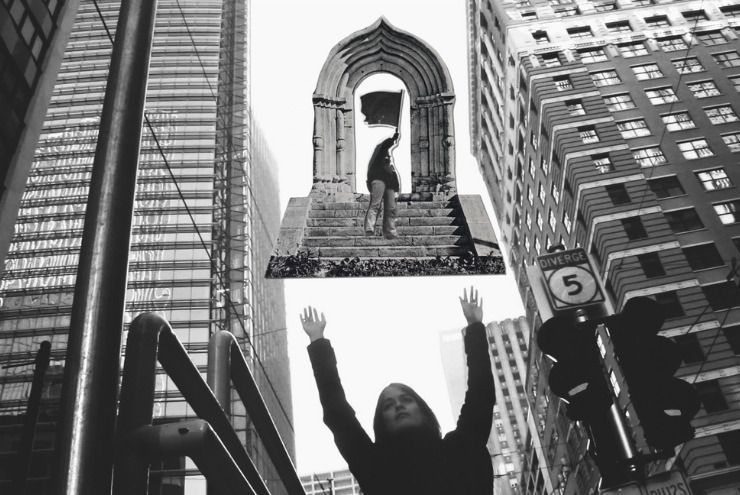
TLT: I am, first and foremost, a poet and collage artist. That’s how I approach any project no matter the medium, from that lens of poetry and sampling. I am a process artist, so for me, the tedium of stop-motion is very therapeutic. I like the gritty, hand-crafted element as well. Almost perfect, but not quite. I think I’ll always prefer art where you can see the process in which it was made when you experience the final product—that it is somehow imprinted or imbued with an essence of that process. And in that process, you see the human who made it. I think that’s always been very important to me. Not to hide the system of strings that holds up the thing you’ve made, but to shine light upon them, hang a prop along them, pluck them in song, invite those threads along to the end.
I wrote the “prologue” poem (performed by Cathy Power) and the nested poetry “scene” between Merel & Tony using language almost exclusively from the lyrics of the song itself. This is the technique I used to create the poetry of our last video, Matroesjkapop, as well. I’m always so in love with the poetry of their lyrics that I want to siphon new poetry from the existing poetry . . . it’s a cut-and-paste process using the world of the song as the sample material. The infusion of live-action footage and stop-motion animation has also been a staple of all of our videos together thus far.
In my initial concept, I knew I wanted to depict a theatrical portrait of a personal private and public world that Merel occupied, as well as the broader global perspective from the telecaster. But I also wanted some other-worldly landscape, an imagined space. The more illuminated reality, moving closer to the more “perfect” world. Stephanie Gonzalez is one of my longest-standing artist friends in the community, and the year we filmed this piece (2019), she had created this stunning collection of mixed media lightboxes. My more perfect world would include something like these: colorful, abstract, playful, and inquiring, and definitely made by a queer person. Her lightboxes land this lovely balance between striking and unusual, the perfect backdrop to the passion and tenderness of Merel & Tony’s performance.
What exactly do you hope to give your audience? What do you hope for 2023?
TLT: The offering really lives in the language of the song: Let’s not move too fast and let’s not look too hard and let’s really think twice before putting up a fight. It’s a pledge and plea toward collective patience, understanding, and acceptance. It is a reminder of how delicate we all are. At the same time, it serves as a caution against complacency when those of us in positions of privilege should move swiftly and take up arms against injustices, when we should take a hard look inward, even (and especially) when what we find we must change comes at the expense of our placement in the scaffolding of privilege. It is a reminder against white fragility, against privileged delicacy.
This was filmed “before the world changed.” Can you share the importance the Lombardy House held for you, now that it no longer exists? How does this film change in this new world?
TLT: It was filmed the December before COVID hit the U.S. I was living at the Lombardy House, which had long been a bastion of the underground poetry, art, and music scene. So many incredible art-making women, queers, trans folks, and fantastic freaks lived and created and hosted events in this home. The interior shots and wildly overgrown lawn serve as a time capsule to a very special temporary autonomous zone. Just as the pandemic really hit, I took a residency job in northern California and my roommate stayed on at Lombardy. She was a service industry worker at the time, so of course, her income was gutted by the pandemic, forcing her to leave the home some months later. It was the end of an era for a small group of art folks. With everything happening in the world, this project took a back seat. I didn’t return to the footage until this past December, when Merel & Tony felt ready to release it. I’m grateful to revisit and pay tribute to Lombardy through this piece.


